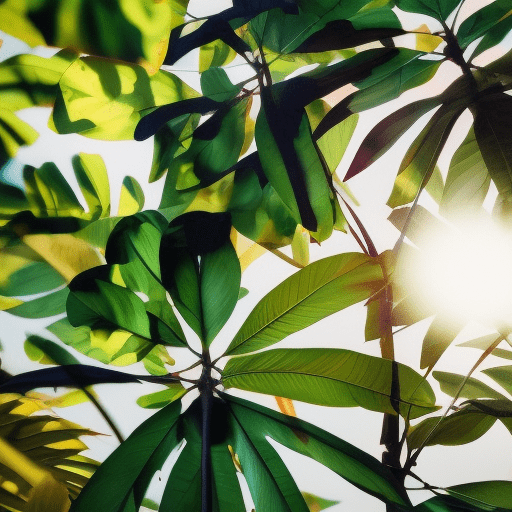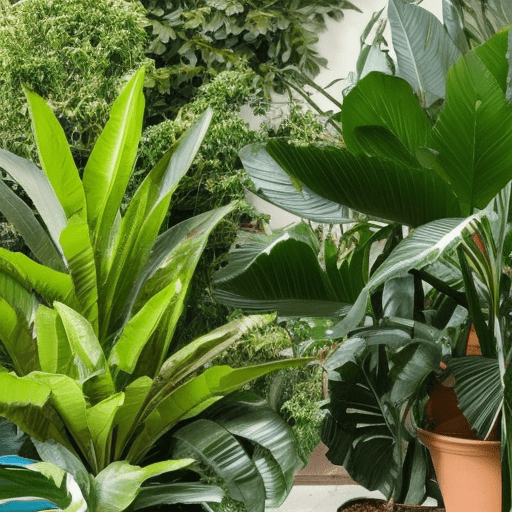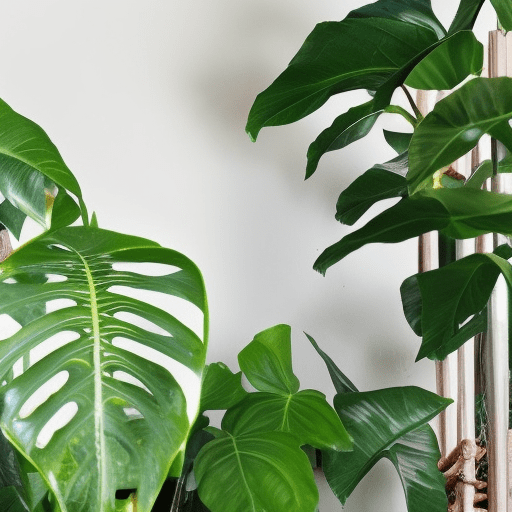If you are lucky enough to have a tropical foliage plant in your home, then you know that they require special care.
These plants are beautiful and unique, but they need the right conditions in order to thrive.
In this blog post, we will discuss the best way to care for your tropical foliage plant so that it can stay healthy and look its best!

Bright light, water, and humidity are needed for tropical foliage.
Most enjoy high humidity, so if your home is dry, spray them daily.
They like being watered regularly; water when the top inch of soil feels dry.
Balanced liquid fertilizer every two weeks.
Most tropical foliage plants enjoy bright light but can tolerate some morning or afternoon sun.
They should not be placed in direct sunlight for long periods of time as this will scorch their leaves.
If you have a sun lover, consider placing it in front of a north-facing window.
What is tropical foliage plant care?

When it comes to proper care for tropical foliage plants, bright light, water, and humidity are key.
Explain it to a child
Tropical foliage needs bright light, water, and humidity.
Most plants enjoy high humidity, so if your home is dry, consider spraying them daily.
They also like being watered regularly; water the plant when the top inch of soil feels dry. Use a balanced liquid fertilizer every two weeks.
It’s important to identify your plant’s ideal bright light placement; south or east-facing windows tend to be best.
Depending on the type of plant you have, you may need to mist it regularly to increase its humidity levels.
Prolonged periods of direct sunlight can be damaging and should be avoided if possible.
Watering routines will vary depending on the type of soil your plant is potted in and the climate in which it lives; sandy soil tends to dry out more quickly than others do, while tropical climates require less frequent watering.
Be sure not to let the soil remain soggy for too long as this could lead to root rot.
What light requirements does a tropical foliage plant need to thrive?
When it comes to caring for a tropical foliage plant, one of the most important factors is making sure it gets enough light.

These plants need a lot of bright and indirect sunlight—four or more hours per day—in order to stay healthy and happy.
For this reason, they’re best placed in an area with lots of natural light, like near a window or in a conservatory where sun exposure can be monitored.
If your home doesn’t get enough sunlight, you’ll need to invest in artificial lights such as LED grow lights that mimic the spectrum of natural light and produce extra warmth for your plants.
Additionally, you should be mindful about where you place your plant: even if it has access to sufficient lighting if the sun’s rays are too direct then the leaves may become burned or wilted.
Ultimately, knowing how much light your tropical foliage plant needs is absolutely essential if you want it to thrive.
With proper care and plenty of indirect light, these lush and decorative specimens can bring vivid splashes of color into any indoor environment.
How much water should you give your tropical foliage plant each week, and what type of water should you use?
Properly watering a tropical foliage plant is essential for its health and vitality.
Knowing how much water to give and what type of water to use can make the difference between a thriving garden of leafy green plants and dry, lifeless stems.
Generally speaking, tropical foliage plants like regular watering, so aim to give your plants about a cup of water per week.
It’s best to use distilled or rainwater whenever possible: tap water contains chemical additives like chlorine and fluoride which can be absorbed by the roots, leading to stunted growth or discoloration.
Depending on local growing conditions, you may need to adjust the amount of water you give as needed; if your plant looks overly wilted or feels soggy, then dial back the frequency or amount of water you’re providing.
Alternatively, if it’s been unusually hot outside and your leaves are starting to curl inward, then think about giving an additional cup per week until things cool off again.
By diligently following these instructions in terms of how much water to provide and what kind of source you ought to use, you’ll ensure that your tropical foliage has all the moisture it needs to thrive!
Why is humidity important for a tropical foliage plant, and how can you increase the humidity in your home?
Tropical plants are renowned for their lush foliage and vibrant foliage.
Unfortunately, they can be challenging to keep alive in domestic settings because their necessary environmental conditions may not be present.

High humidity is a critical factor for the health of these plants, as it helps them to absorb nutrients and moisture.
Dry air can sock up vital water that the plant needs to survive, causing it to gradually perish over time.
Luckily, there are a few simple things you can do to increase the humidity in your home.
By placing containers filled with damp pebbles or water near your plants, you can help create a mini-greenhouse effect that raises the surrounding humidity levels.
The use of humidifiers is also effective for promoting plant health.
Try experimenting with different methods until you find one that works best for your tropical foliage plant; when done correctly, increasing humidity levels will ensure your plant grows healthy and strong!
How often should you fertilize a tropical foliage plant?
Fertilizing your tropical foliage plant is essential to helping it thrive, but knowing exactly how often you should fertilize can be difficult.
As a general guide, slow-release formulas are recommended for most plants every few months with a bit of extra during the plants’ growing season.
Some plants may require faster-acting formulas and more frequent applications, such as every couple of weeks.
When applying fertilizer, it’s important to refer to the instructions on each product for further guidance since some varieties may need less or more than others.
The best way to determine which rate works best for your plant is to start with the lowest recommended dose and adjust dosage and frequency from there based on the results.
Be aware that too much fertilizer can burn roots or cause leaf discoloration, so it’s important not to over-fertilize your tropical foliage plants.
With proper care and maintenance, your plants will flourish and look as beautiful as ever!
What are some common problems that can occur with tropical foliage plants, and how can you solve them?
Tropical foliage plants can add a beautiful, exotic touch to any home or garden.
However, their delicate nature means that problems can arise with their care and maintenance.
Some of the most common issues include yellowing leaves, wilting, pests and diseases, nutrient deficiency, and waterlogging.
Fortunately, these issues all have fairly simple solutions.
To counter yellowing leaves, take steps to ensure your plants are receiving the recommended amount of light for their species.
Wilting can be caused by inadequate watering or root rot fungus; in this case, use an organic fungicide to combat fungal diseases.
Pests such as scale insects and aphids should be removed by hand or sprayed with insecticidal soap, while nutrient deficiencies can usually be solved with a slow-release plant food fertilizer.
Finally, to address waterlogging issues lay down a layer of gravel around your plants before potting them – this will encourage better drainage and discourage pesky mold growths.
By following proper growing instructions and tackling any problems as soon as they arise you can ensure your tropical foliage plants thrive for many years to come.
With a thorough understanding of bright light requirements and appropriate watering schedules tailored to each individual plant, you can ensure that your tropical foliage plants get the care they need.
Article Sources
Jacks of Science sources the most authoritative, trustworthy, and highly recognized institutions for our article research. Learn more about our Editorial Teams process and diligence in verifying the accuracy of every article we publish.
